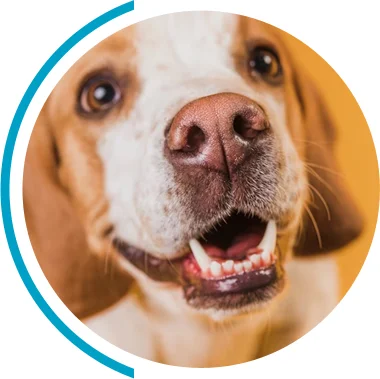Helping scared dogs overcome their fears is a crucial aspect of dog training that requires patience, expertise, and understanding. In Irvine, various professional dog trainers are experienced in working with dogs that exhibit fearful behaviors. This article aims to provide a comprehensive understanding of fear in dogs, the role of professional trainers, effective training techniques, home training tips, and ongoing progress maintenance.
Fear is a natural response in dogs, just like in humans. It can manifest in various ways and may stem from a range of causes. Understanding the root causes of fear in dogs can enable owners to address these issues more effectively and compassionately.
Dogs can develop fears due to several factors, including:
Understanding these common causes of fear is the first step in providing proper support for your scared dog. Additionally, environmental factors such as loud noises, unfamiliar surroundings, or even changes in routine can exacerbate a dog’s fear. For instance, a sudden thunderstorm or fireworks can trigger anxiety in dogs that are sensitive to loud sounds. Recognizing these triggers can help owners create a more secure environment for their pets, reducing the likelihood of fear responses.
Recognizing the signs of fear in dogs is essential. Owners should be attentive to behavioral cues that indicate their dog is anxious or scared. Some common signs include:
By being observant, dog owners can accurately assess their pet’s emotional state and take the appropriate measures to comfort and train their dog. It’s important to note that fear can also lead to more severe behavioral issues, such as aggression or destructive behavior, if not addressed properly. For example, a dog that feels cornered may lash out as a defense mechanism. Therefore, understanding and identifying fear is not just about recognizing discomfort; it is also crucial for the safety of both the dog and those around them. By fostering a supportive and understanding environment, owners can help their dogs learn to cope with their fears over time.
Professional dog trainers play a significant role in helping scared dogs become more confident and relaxed. Their expertise is crucial in identifying underlying issues and developing a tailored training plan that addresses the individual dog’s needs.
Dog trainers utilize a variety of techniques to help fearful dogs. They create a safe and structured environment where dogs can learn at their own pace. Trainers often use positive reinforcement to reward brave behavior, which helps to build the dog’s confidence over time.
Additionally, professional trainers can teach owners effective communication methods, which further supports the dog’s learning and sense of security.
Choosing the right trainer is crucial for the success of any training program. Owners should look for trainers who specialize in fear-based training methods and have experience with scared dogs. It is beneficial to seek out trainers who employ humane and scientifically backed training techniques, focusing on positive reinforcement rather than punishment.
Potential clients should also consider evaluating the trainer’s credentials and asking for references or testimonials to ensure they find the best fit for their dog’s needs.
Several effective techniques can be employed during dog training to address fear. Understanding these methods can empower dog owners in their journey toward helping their scared pets.
Positive reinforcement training is one of the most effective methods for helping scared dogs. This approach involves rewarding desired behaviors with treats, praise, or playtime, which encourages the dog to repeat those positive actions. This type of training develops a trusting bond between the dog and the owner.
It’s important to note that consistency in rewarding desired behavior is key to the effectiveness of this technique. Over time, scared dogs learn that they can safely engage with their environment because positive outcomes are linked to their actions.
Desensitization and counter-conditioning are other essential techniques used in fear-based dog training. Desensitization gradually exposes dogs to the source of their fear in low-stress situations. This slow exposure allows dogs to acclimate to their fears without feeling overwhelmed.
Counter-conditioning involves changing the dog’s emotional response to a stimulus. By pairing the frightening experience with something positive—like treats or toys—owners can gradually alter their dog’s perception of fear-inducing situations.
Training doesn’t stop when you leave the professional environment; it needs to continue at home. Dog owners play a vital role in their dog’s development, and implementing effective home training strategies is essential.
One of the most important steps is to create a safe, quiet space where your dog can retreat whenever they feel anxious. This area should be comfortable and filled with soothing elements like soft bedding, toys, and familiar scents.
Limiting exposure to known stressors (such as loud noises or chaotic environments) can also help maintain a calm atmosphere, allowing the dog to feel secure as they navigate their fears.
Training a scared dog requires a great deal of patience and ongoing consistency. Owners should establish a routine that incorporates short training sessions, ensuring their dog grows accustomed to new experiences gradually. Repeated exposure and consistent positive reinforcement will help solidify progress over time.
Additionally, owners must remain calm and composed, as their tone and demeanor can significantly affect their dog’s emotional state.
Training doesn’t end when initial fears are addressed. It is essential to maintain progress and prevent any regression in behavior. Consistent follow-up and continued training practices will keep the dog on track towards a more confident life.
Following up with professional trainers ensures that progress is monitored, and any potential setbacks are addressed immediately. Regular check-ins can keep the training relevant and tailored to the dog’s evolving needs.
Trainers can provide additional resources and exercises that can be incorporated into everyday life, ensuring that both dog and owner continue to learn and grow together.
Early intervention is crucial in addressing fear before it escalates. Owners should remain vigilant to the signs of fear, quickly employing strategies to diffuse anxiety. If old fears resurface or new ones develop, addressing them promptly can help prevent longstanding issues from taking hold.
Support from trainers, consistent practice, and a loving home environment can significantly impact a scared dog’s journey towards confidence. By being proactive and attentive, owners can foster a trusting relationship that empowers their furry companions to thrive.
If your beloved canine companion is struggling with fear, remember that you’re not alone. At The Grounded Hound Canine Coaching, we understand the challenges you and your dog are facing. With a CTC from the Academy for Dog Trainers, an ABCDT from the Animal Behavior College, and specialized certifications in Separation Anxiety, we’re equipped to offer you the support and guidance you need. Our approach is grounded in Patience, Kindness, and Consistency, ensuring that you and your dog can build a strong, understanding bond. Don’t let fear stand in the way of your dog’s happiness. Contact Us Today and take the first step towards a more confident and joyful life for your furry friend.

